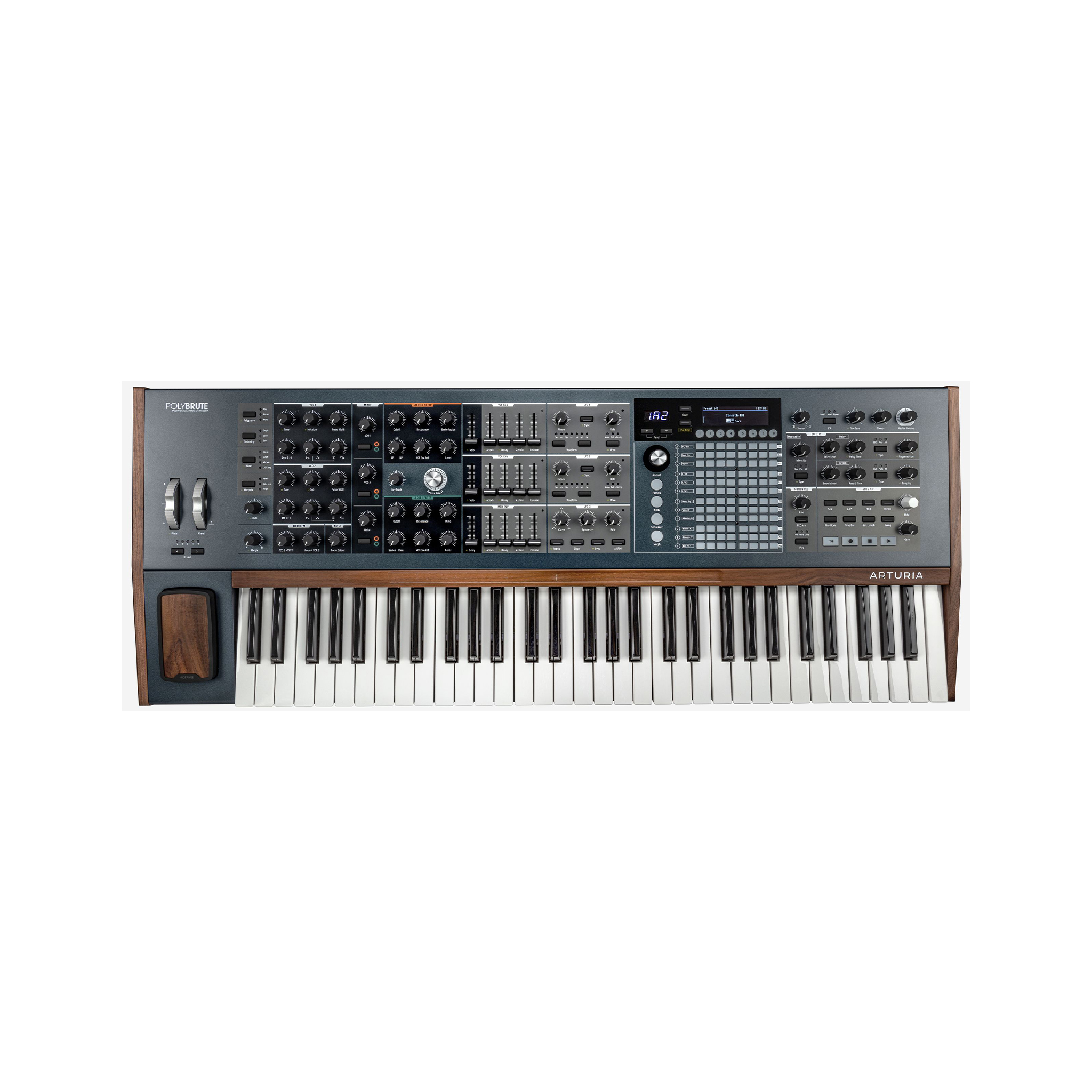The Big Review: Arturia PolyBrute
It’s been a long time coming but now a new Brute has entered the arena, looking to take its rightful place in the pantheon of polyphony.
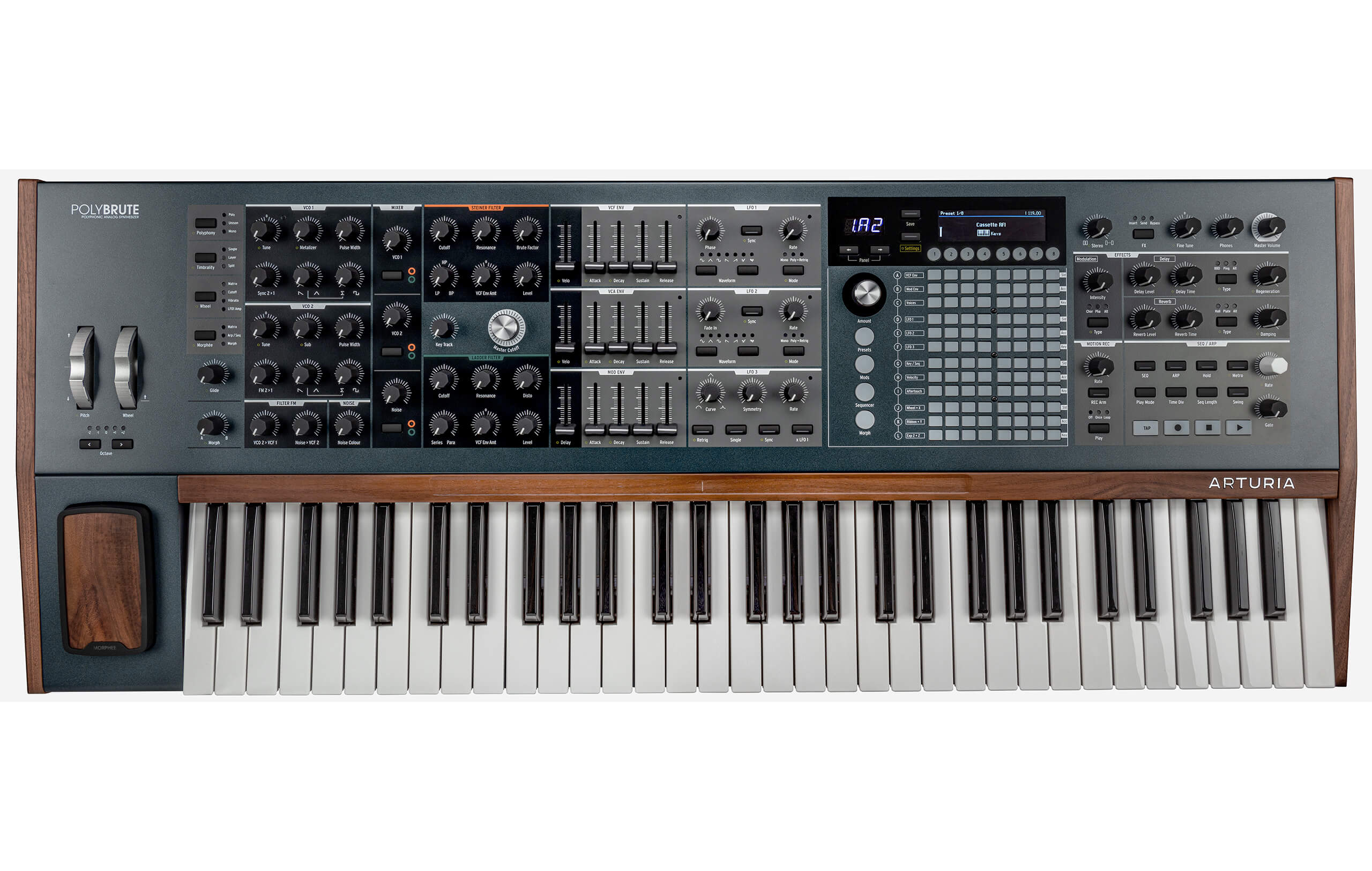

Price £2,260/€2,500
Contact Arturia | Source Distribution
Not since 2009, has Arturia released a polyphonic synthesizer. Its first hardware synth, the Origin, was a digital modeller. But, in the intervening years, and with the massive popularity of its Brute analogue monosynths, you’d be forgiven for forgetting that the company had started its hardware journey with a poly. Now, however, Arturia has finally released the PolyBrute, a polysynth from the same family as the little analogue machines we know and love. So, was it worth the wait?
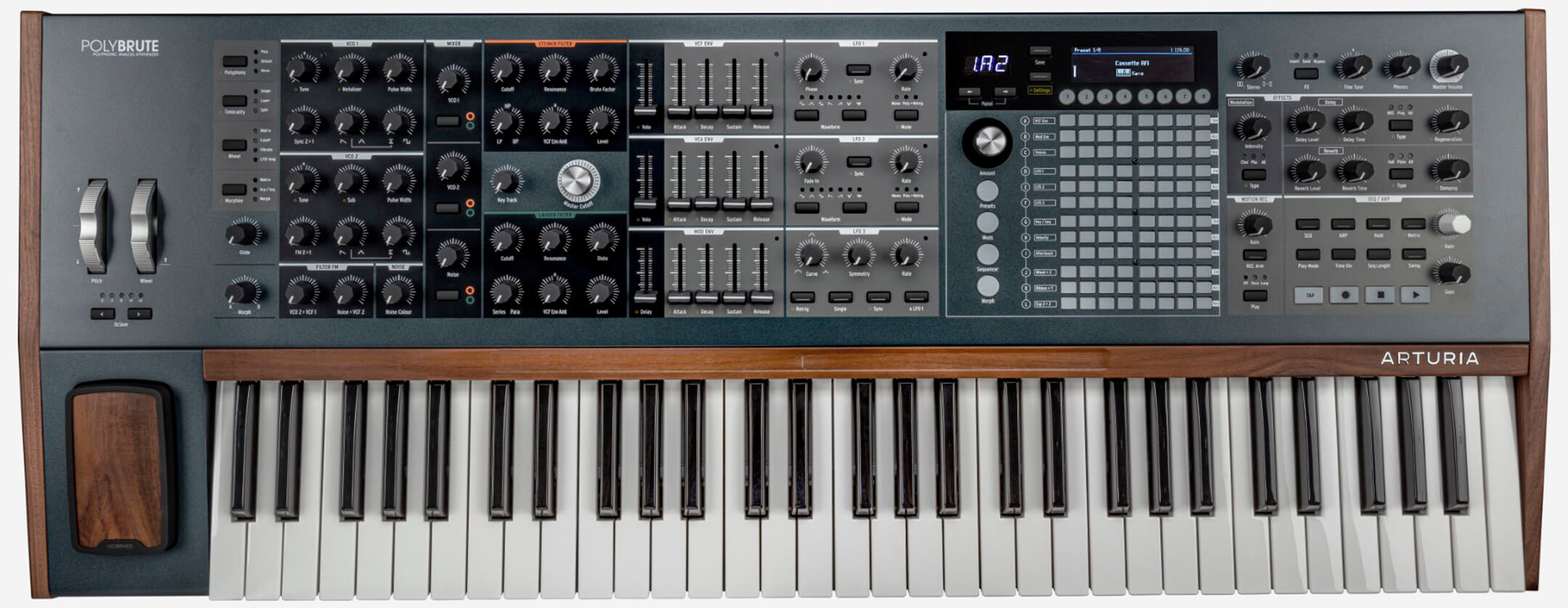
Optional extras
All polysynths come with a degree of expectation: they should have a couple of oscillators per voice, a filter and at least a few envelopes. Rest assured: this is a proper all-analogue polysynth, with the exception of the effects on the backend. All of its elements are placed under digital control, meaning that the pots and fader positions can be saved, as well as exploited via the use of a computer-based editor.
Anyone who has used an Arturia synth before will feel at home with the PolyBrute. The synth offers two VCOs per voice, each presenting slightly different operational elements. VCO1 is equipped with a see-saw pot that shifts from saw to triangle wave, while another pot allows you to shift to a pulse or square wave whose pulse width can be modulated too. The Metalizer brings a harsh metallic colour to the triangle wave, and tuning can be moved up and down by a single octave either side of the note played on the keyboard. In the menu, there’s an option to apply the Metalizer to all waveforms. Doing so will grant you instant access to gnarly, aggressive starting points. VCO1 is also syncable to VCO 2.
VCO 2 has the same waveform credentials but the Metalizer here is replaced by a sub-oscillator that can be increased in amplitude via the designated pot. There’s also the capacity for frequency modulation, with which you can create fantastically colourful audio-rate beating.

Both VCOs are blended through the mixer section, plus there’s the option to add white noise via its own pot. At times, the VCOs sound weighty, but sometimes feel thin compared to other polysynths on the market. This isn’t necessarily a bad thing. People have long pondered what an original Minimoog might sound like if it was available in polyphonic form with the exact same electronics. That’s not an easy question to answer but many feel that it would simply be overwhelming. It might sound huge in isolation but place it in a mix and it’ll either eat everything or require an enormous amount of mixing. We have to conclude, then, that the PolyBrute provides the best of both worlds.
Much like the MatrixBrute, the PolyBrute’s VCO signals can be routed to one of two filters or both in series. The first of the filters is the Arturia favourite, the aggressive two-pole resonant Steiner Parker, which comes with Brute Factor distortion. In other Arturia settings, Brute Factor has been such a beast that it can be difficult to control. But not here. It’s as though the calibration of the pot has been fine-tuned to offer greater gradation, which lets you dial in just the right amount of distortion. Better still is the variable-state design of this filter, which moves seamlessly between low, high and band-pass configurations – and sounds exceptional doing so.
The ladder filter is a resonant four-pole design. While the distortion has the capacity to replace any low-end drop-out with the application of resonance, this filter feels underwhelming alongside it. Nevertheless, it’s smooth, functional and serves its purpose.
The usual elements of key-tracking and direct cut-off control via envelope are all available too. There’s also a global cutoff control that mirrors the cutoff of both filters and is available via a single pot. It’s a nice touch.
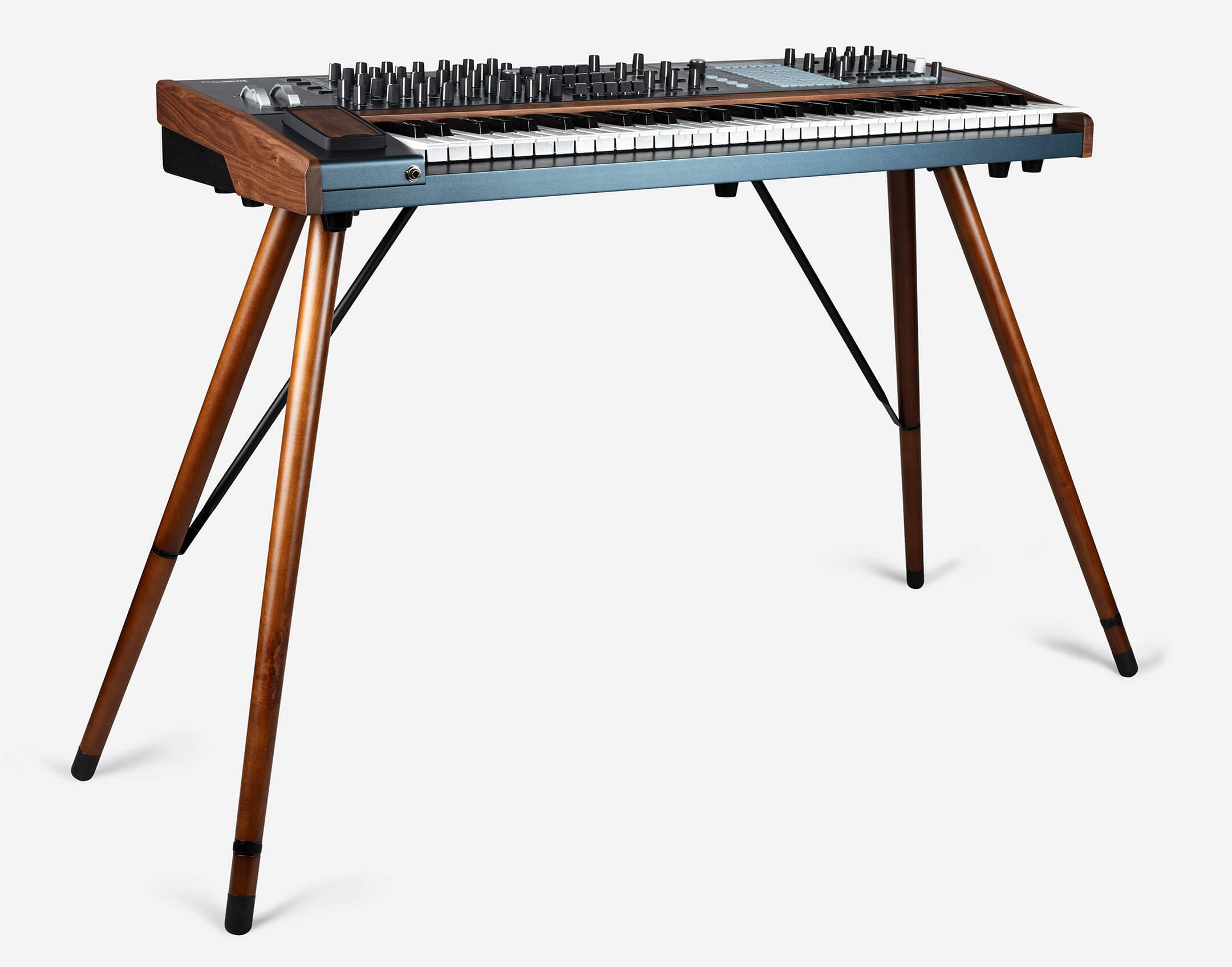
Mod’ing up
The modulation options begin with the three ADSR envelopes. These are hard-wired and labelled to VCF and VCA, with the third labelled a modulation envelope.
Not to be outdone, the LFO section is equally comprehensive, with three independent LFOs. LFO 1 and 2 offer the same stock functionality, with seven waveforms and the ability to sync to the onboard clock. LFO 3 has slightly different credentials, including the ability to change the curve and symmetry of the wave shape. With the pot at 12 o’clock, the LFO presents a triangle that can be smoothed to a greater curve or graduated to a spike, which can be deployed to create a pulsing effect. LFO 3 also offers triggering options, such as the ability to retrigger with keypress, trigger once, and even have modulation directly applied from LFO 1.
Applying modulation across the synth is simple, and is activated via the Mod button next to the matrix. The matrix here is smaller than that on the MatrixBrute, which makes application a little more fiddly. But once the basic X/Y modulation routing has been activated, it’s a quick case of increasing the amount until you get your desired effect.
The arpeggiator features seven play modes, as well as latching. It also boasts Arturia’s clever generative pattern mode, whereby a new pattern is created with each set of notes deployed. This can also be copied to the sequencer element of the PolyBrute, allowing for greater editing.
The sequencer is equally flexible, with a number of operational modes, and includes the ability to hit record and play in real time with the step sequencer, allowing you to alter notes and polyphony on the fly.

Morph suits
The PolyBrute can function as a regular polysynth but it also sports an abundance of real-time control, giving it huge creative potential.
The pitch and modulation wheels, located on the far left of the upper panel, are not in the most comfortable position. But the rationale for the move is clear: to make way for one of the PolyBrute’s main events, the Morphée. This device invites comparisons to the Expressive E Touché but Arturia is quick to dispel suggestions that the tech is the same – and it’s right. They look similar but work differently.
The Morphée offers three-way directional control, with its upper plate a responsive X/Y control surface. The third control element is activated by pressing down the entire faceplate. These control elements can be assigned to any element available from the modulation matrix but its default setting stems from another PolyBrute calling card, described as morphing.
Located close to the Morphée, the morph pot see-saws from sound A to sound B. Here you have the capacity to create or load a patch into part A, with an entirely different patch in part B. By turning the morph knob, you can morph from one sound to the other. This is not layering, though. This is literal morphing, where the sonics shift from one point to the next.
Should you have two patches loaded pitched an octave apart, the morph function will reflect this with pitch-based movement as the sound shifts. This can be applied using the morph pot or from the Morphée, without affecting the overall polyphony of the instrument. It would have been nice to have more than six voices – which would allow the release phases or more elaborate harmonies to play out without cutting off upon the next attack phase – but even so, this is a remarkable technical achievement.
The PolyBrute also features a ribbon controller built right into the wooden section above the keybed. All these control elements are endorsed by the display, which springs to life upon any interaction. The display is somewhat small given the number of reasons the synth gives you to engage with it, but it is crisp and clear.
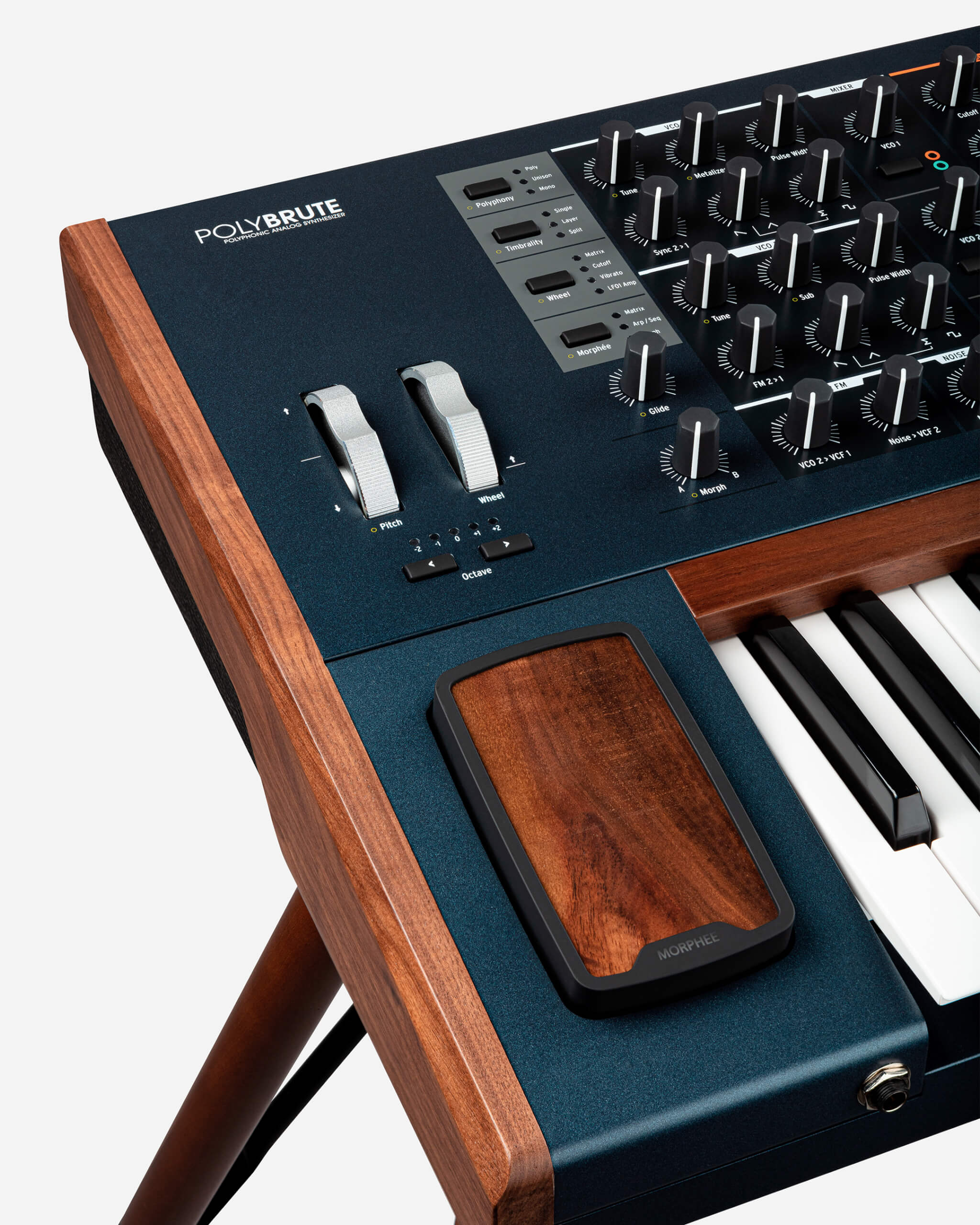
Final note count
The PolyBrute looks, feels and behaves like other Arturia devices and its build quality is robust throughout. It follows similar architectural rules as other Arturia products but feels more refined. The control, modulation and morphing properties of this instrument set it apart from competitors. It’s unique in many respects and we have to give kudos to Arturia for exploring these different angles.
Overall, this is a superb synth to play and use thanks to its emphasis on real-time control. It can feel too reliant on its backend effects, which are the one element of this analogue synth that is entirely digital in make-up. We find ourselves reaching for the effects-bypass button on many occasions, at which point the PolyBrute begins to sound a little flat and colourless. But it underlies the importance of effects in providing additional colour to signal paths, which is now the norm.
Arturia has taken its time in delivering the PolyBrute and we applaud that. It was worth the wait. Explore the PolyBrute and prepare to be morphed to another dimension.
Do I really need this?
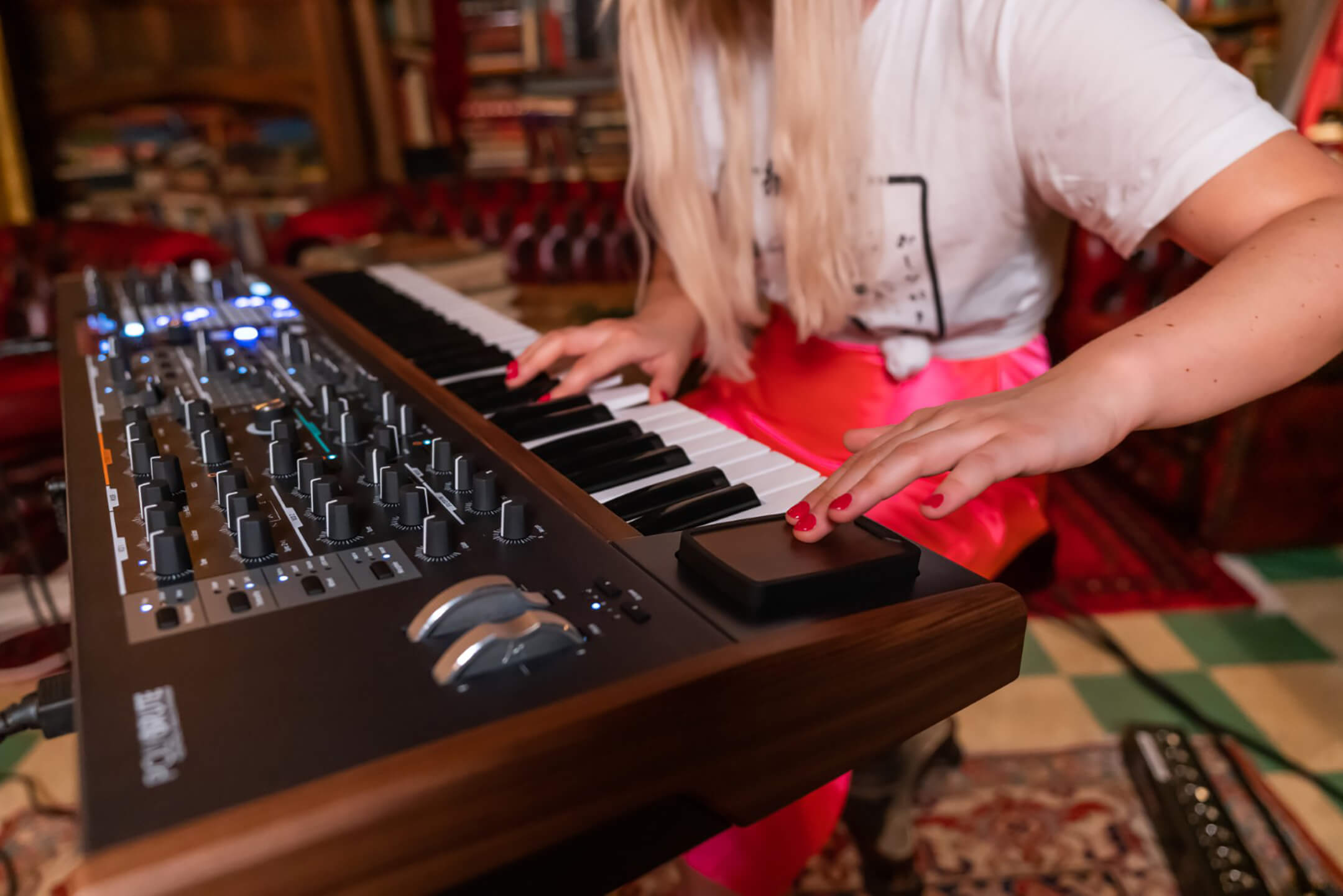
Arturia have something of a cult following, often from musicians who have endeared to their great sounding products with matching sensible price points. The PolyBrute, much like the MatrixBrute which preceded it, is also sensibly priced, but at a budget which might not be as attractive as one of the more junior models. The obvious consideration here is that this is a polyphonic synthesizer. Unlike the mono synths, it plays chords, as well as offering capacity to also behave like a mono synth. It is a nicely put together machine which is characterful in sound, with plenty of sonic options that can go fairly deep in colour. The realtime control of elements such as morphing are ingenious and brilliant, and it’s one of the hottest selling points for the PolyBrute. It’s just a shame that it is limited to a mere six notes of polyphony, which feels less than it could or should be.
Key Features
- Powerful six-voice analogue synthesizer
- Mono, unison and polyphonic voice modes, with split and layering capability
- Full-size five-octave keyboard with velocity and aftertouch
- Vast real-time performance control
- Two analogue VCOs per voice with sub-oscillator
- Ladder and Steiner Parker filters
- Comprehensive and simple modulation routing
- 64-step polyphonic sequencer
Alternatives
A unique synth with 12-note polyphony and an enticing six-note binaural polyphonic mode, the Super 6 features retro stylings and boasts huge playability. It’s a true players’ synth in which you’ll become completely immersed in sound.
Dave Smith/Sequential
Prophet Rev2 (8 or 16 voice) £1,400/£1,850
With greater polyphony, the Prophet Rev2 is available in eight-voice or 16-voice formats, allowing plenty of possibilities for layering sounds and creating textures. The fascia can feel a shade cluttered on this model but it’s analogue sound is incredibly rich.
